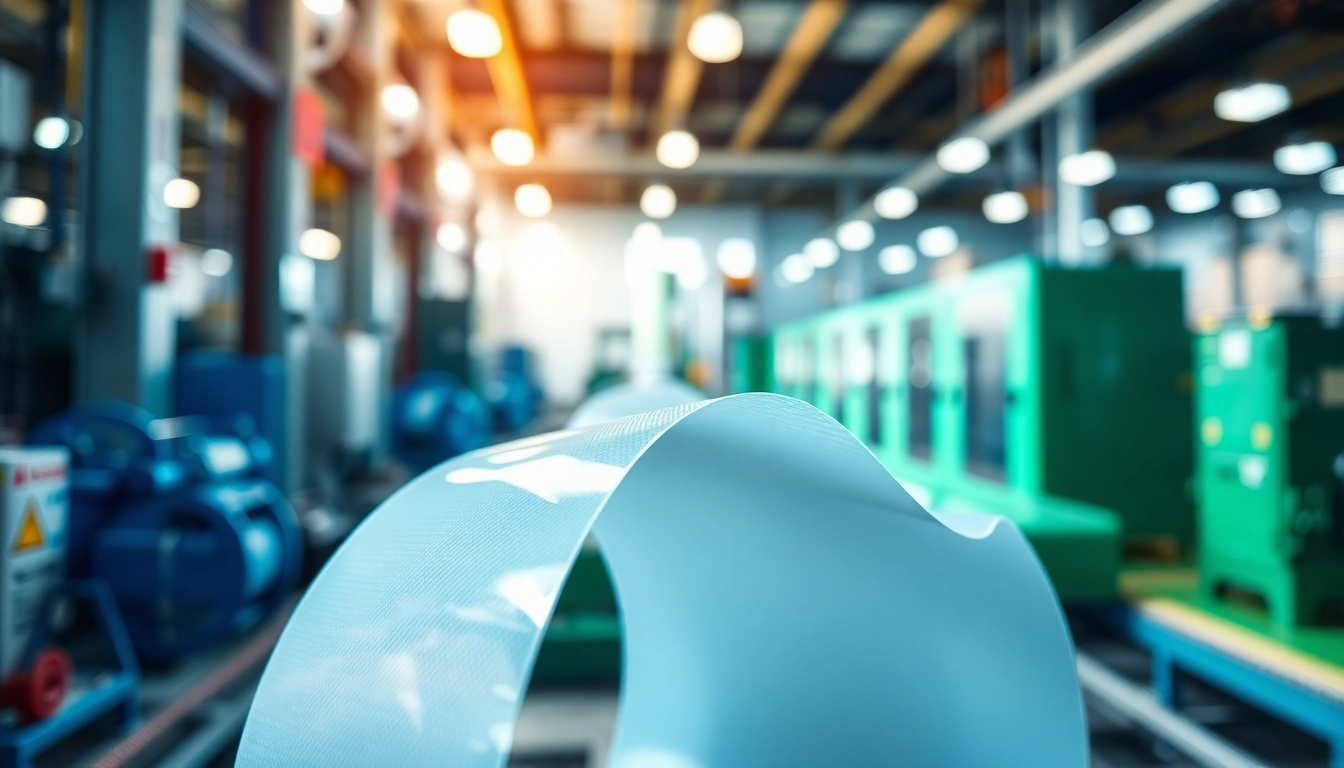Introduction to Cellulose Ether Manufacturer
Cellulose ethers represent a unique class of compounds derived from cellulose, the most abundant organic polymer on our planet. These versatile substances are utilized in myriad applications across multiple industries, showcasing their broad potential and adaptability. Understanding the role of a Cellulose ether manufacturer is essential as we delve into the intricacies of these compounds, their applications, and the specifics involved in their production.
Definition of Cellulose Ethers
Cellulose ethers are chemical derivatives from naturally occurring cellulose, which undergoes a process known as etherification. This transformation results in hydrophilic, non-ionic polymers that can effectively modulate physical properties such as solubility, gel formation, and thickening viscosity. Common examples include Hydroxypropyl Methylcellulose (HPMC), Methylcellulose (MC), and Carboxymethylcellulose (CMC), each with distinct characteristics and applications.
Importance in Various Industries
Given their unique properties, cellulose ethers play an essential role across various industries:
- Construction: They improve workability and reduce water demand in cementitious materials, making them crucial for applications in plaster, mortar, and tile adhesives.
- Pharmaceutical: Cellulose ethers serve as binders, stabilizers, and thickening agents, pivotal in drug formulations for controlled-release applications.
- Food Industry: They function as emulsifiers and stabilizers, enhancing texture and shelf life in processed foods.
Overview of Manufacturing Process
The manufacturing process of cellulose ethers involves several critical steps, including the preparation of cellulose, etherification, purification, and drying. The process begins with the selection of suitable cellulose sources, often derived from wood or cotton. The cellulose is then treated with various reagents to create specific ether functionalities, resulting in enhanced properties tailored to specific uses. Finally, the cellulose ether is purified and dried to achieve the desired product form.
The Role of Cellulose Ether Manufacturer in Construction
In the construction industry, cellulose ethers are particularly valuable. Their ability to enhance performance characteristics in building materials has made them integral to modern construction practices.
Applications in Construction Materials
Cellulose ethers are primarily used in several construction materials, including:
- Tile Adhesives: They improve adhesion and workability while allowing for extended open time without compromising performance.
- Mortar: Cellulose ethers enhance workability and minimizes water loss, crucial for achieving optimal strength in dried materials.
- Plasters: They adjust viscosity and ensure a smooth application, leading to a more aesthetically pleasing finish.
Benefits of Using Cellulose Ethers in Building
The incorporation of cellulose ethers into construction materials provides numerous benefits:
- Improved Workability: Cellulose ethers enhance the ease of application, allowing for smoother finishing and increased efficiency in labor.
- Water Retention: They help retain moisture in mixtures, ensuring that essential chemical reactions occur properly for optimal strength and durability.
- Increased Open Time: The extended workability time allows applications to be adjusted and corrected before hardening, improving overall quality.
Case Studies of Successful Implementations
Successful implementation of cellulose ethers in construction has been documented in various projects. For instance, a large-scale concrete renovation project reported a significant increase in adhesion strength due to the inclusion of HPMC in their tile adhesive formulation. This led to reduced failures in high-moisture environments. Another case study showcased the use of cellulose ethers in self-leveling compounds, which improved the surface finish and decreased labor costs.
Pharmaceutical and Food Applications of Cellulose Ethers
The versatility of cellulose ethers extends beyond construction; they also play vital roles in the pharmaceutical and food industries, showcasing their multifaceted applications.
Role in Drug Formulations
In pharmaceuticals, cellulose ethers function as stabilizers and binders in various forms of medications, including tablets and gels. They control the release of active ingredients, making them instrumental in developing controlled-release formulations. Their properties help to minimize the onset of side effects by regulating the release profile of drugs within the body, improving therapeutic efficacy.
Enhancing Food Products with Cellulose Ethers
In the food industry, cellulose ethers enhance product texture and shelf life. For example, they are used as emulsifiers in salad dressings to maintain stability during storage. In low-fat products, cellulose ethers improve mouthfeel, compensating for the loss of fat content. Moreover, they help maintain moisture levels, prolonging the freshness of baked goods.
Regulations and Compliance for Manufacturers
Manufacturers of cellulose ethers must adhere to strict regulations to ensure consumer safety and product efficacy. In many countries, cellulose ethers are classified as food additives or pharmaceutical excipients that must comply with specific standards set by regulatory bodies. Ensuring compliance not only avoids legal repercussions but also builds consumer trust, which is essential in these industries.
Challenges Faced by Cellulose Ether Manufacturer
Despite the significant opportunities within the cellulose ether market, manufacturers encounter several challenges that can impact production efficacy and market stability.
Sourcing Raw Materials Sustainably
Sourcing raw materials sustainably is a pressing challenge for cellulose ether manufacturers. As global awareness of environmental issues rises, there is a growing demand for sustainable sourcing of cellulose. Manufacturers must navigate the complexities of sourcing from responsible suppliers who utilize eco-friendly practices, which can often increase production costs.
Technological Advancements in Production
Technological advancements are continuously shaping the cellulose ether manufacturing landscape. Staying ahead in innovation presents another hurdle, as manufacturers must invest in R&D for new formulations and production technologies. This includes developing more efficient processes that minimize waste while maximizing yield, a necessity for staying competitive in a fast-evolving market.
Market Competition Analysis
The cellulose ether market is increasingly competitive, with numerous players vying for market share. Manufacturers need to differentiate their products through quality, performance, and customization. Conducting thorough market analysis can help identify trends and consumer preferences, enabling manufacturers to tailor their offerings and maintain a competitive edge.
The Future of Cellulose Ether Manufacturer in Innovation
With the ongoing demand for cellulose ethers across multiple sectors, the future of cellulose ether manufacturing appears promising, marked by innovation and advancement.
Emerging Trends in Cellulose Ether Technology
Emerging trends include the development of bio-based cellulose ethers that prioritize sustainable practices and reduce reliance on non-renewable resources. Advances in nanotechnology and smart materials are also shaping future applications, allowing for enhanced functionalities and efficiency across various sectors.
Sustainable Manufacturing Practices
Sustainable manufacturing practices are becoming critical within the cellulose ether industry. Implementing greener production processes, investing in renewable energy, and utilizing recyclable materials are all strategies that manufacturers are adopting to align with global sustainability goals.
Predicted Market Growth and Opportunities
The cellulose ether market is expected to grow significantly as industries recognize their advantages. As new applications are discovered, particularly in emerging markets, cellulose ether manufacturers can tap into a wealth of opportunities for expansion. Strategic partnerships, innovative product developments, and a focus on sustainability will be key drivers in capitalizing on this anticipated growth.















Leave a Reply